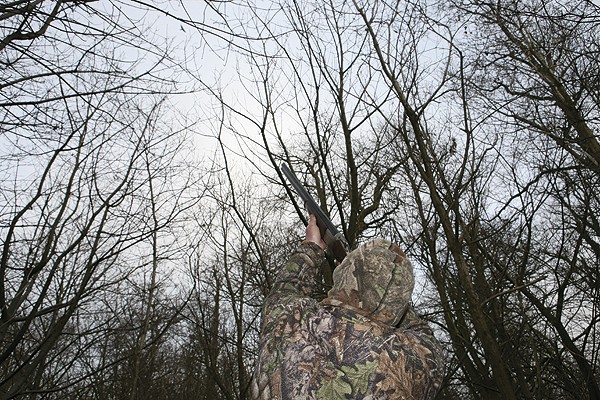News
The key to the dormouse
<strong>How pheasant shoots benefit other species, such as the dormouse</strong>
Would you like to speak to our readers? We offer sponsored articles and advertising to put you in front of our audience. Find out more.
The common or hazel dormouse is one of Britain?s most rarely seen mammals and has retreated to half its former range. This is mainly due to the break up of its preferred habitat, which is ancient woodland, and has led to populations becoming isolated in pockets around England and Wales.
This loveable little mouse is one of the most recognisable small rodents because of its golden fur, furry tail and large black eyes. Dormice are almost exclusively nocturnal. During the winter months they hibernate underground, but during the summer they are active in shrubs and the tree canopy. During this time, dormice are reluctant to come down to ground level so that makes spotting them difficult.
Females give birth from June onwards and have a litter of between four and six young. Some have a second litter later in the autumn, but survival of those young is dependent on the weather and available food supplies.
Dormice feed seasonally on a varied diet of nectar-rich flowers, seeds and insects. When they first emerge from hibernation they eat the protein-rich flowers of sycamore, hawthorn, elder and dogwood. They move from tree to tree and area to area as the food from each plant becomes available. In the summer, bramble and honeysuckle are important. They eat the nectar-rich, sweet honeysuckle flowers and use the bark for nesting. When berries, fruits and nuts start to ripen in late summer, this signals that the dormouse must start to put on fat reserves for its long hibernation over the winter. Hazelnuts are a particular favourite but sloes, rose hips, blackberries and yew berries are all prized.
Their varied diet means that their habitat must include a wide range of tree and shrub species. This habitat must also have plenty of sunny and open woodland areas, because shrubs will not flower and fruit in continuous shade.
Dormice do not range more than about 70m from their daytime sleeping nest,
so this mix of trees and shrubs must be present within a small area. Traditional long (12 to 20 years) rotation coppicing of hazel within ancient semi-natural woodland is good, provided that coppice blocks are fairly small (preferably less than three-quarters of an acre) and worked in a scattered distribution (rather than one block being cut one year, then the block right next to it being cut the following year).
Dormice are protected by law. The deliberate capturing, disturbing, injuring and killing of them is prohibited, as is damaging or destroying their breeding sites and resting places. You should take into account the time of year and the type of woodland management that you undertake so you do not commit an offence if you have dormice present.
To ascertain if your woodland has a population of dormice, search for chewed hazelnut shells. Choose an area of fruiting hazelnut trees that are heavily laden with fruit and scour a 10m x 10m area for 30 minutes ? if you don?t find any sign of chewed shells then it?s likely there are no dormice. Dormice leave a neat round opening with a smooth inner edge and teeth marks parallel to the rim of the hole, whereas birds and squirrels split a shell in half. Mice and voles generally gnaw irregular-shaped holes with tooth marks at right angles to the rim of the hole. The best time to conduct your shell hunt is from September to October.
Provide places to nest
It is possible to encourage dormice with nest boxes hung on a tree with the hole facing the trunk. It is illegal to disturb a nesting dormouse, so without a licence from Natural England you will not be able to check the box for occupants. But putting them up provides safe places for dormice to raise their young and to sleep in during daylight hours in the spring and summer. Our woodlands are becoming increasingly short of natural nest boxes such as holes and hollows in old trees, so providing them can help increase the dormouse population.
Funnily enough, the habitat requirements of the dormouse are similar to those of pheasants, so keepers and shoot managers are already doing woodland conservation work that will benefit these animals. But we can always do more, such as planting honeysuckle and siting dormouse nest boxes in our woodlands. As one supermarket chain puts it, every little helps.
Related articles
News
Anti-grouse shooting petition crushed by MPs who don't even shoot
Wild Justice's petition to ban driven grouse shooting was quashed in Westminster Hall yesterday, with all but one MP opposing the ban
By Time Well Spent
News
A sound decision as moderators to be taken off licences
The Government has finally confirmed what the shooting community has long argued – that sound moderators should be removed from firearms licensing controls
By Time Well Spent
Manage Consent
To provide the best experiences, we use technologies like cookies to store and/or access device information. Consenting to these technologies will allow us to process data such as browsing behavior or unique IDs on this site. Not consenting or withdrawing consent, may adversely affect certain features and functions.
Functional Always active
The technical storage or access is strictly necessary for the legitimate purpose of enabling the use of a specific service explicitly requested by the subscriber or user, or for the sole purpose of carrying out the transmission of a communication over an electronic communications network.
Preferences
The technical storage or access is necessary for the legitimate purpose of storing preferences that are not requested by the subscriber or user.
Statistics
The technical storage or access that is used exclusively for statistical purposes.
The technical storage or access that is used exclusively for anonymous statistical purposes. Without a subpoena, voluntary compliance on the part of your Internet Service Provider, or additional records from a third party, information stored or retrieved for this purpose alone cannot usually be used to identify you.
Marketing
The technical storage or access is required to create user profiles to send advertising, or to track the user on a website or across several websites for similar marketing purposes.





